
Yuan-Cheng "Bert" Fung was a Chinese-American bioengineer and writer. He is regarded as a founding figure of bioengineering, tissue engineering, and the "Founder of Modern Biomechanics".

Markus J. Buehler is an American materials scientist and engineer at the Massachusetts Institute of Technology (MIT), where he holds the endowed McAfee Professorship of Engineering chair. He is a member of the faculty at MIT's Department of Civil and Environmental Engineering, where he directs the Laboratory for Atomistic and Molecular Mechanics (LAMM), and also a member of MIT's Center for Computational Science and Engineering (CCSE) in the Schwarzman College of Computing. His scholarship spans science to art, and he is also a composer of experimental, classical and electronic music, with an interest in sonification. He has given several TED talks about his work.
Patrick E. Crago is the Allen H. and Constance T. Ford Professor and Chairman of Biomedical Engineering at Case Western Reserve University in Cleveland, Ohio. Crago is a biomedical engineer working as a Principal Investigator at the Cleveland FES Center.
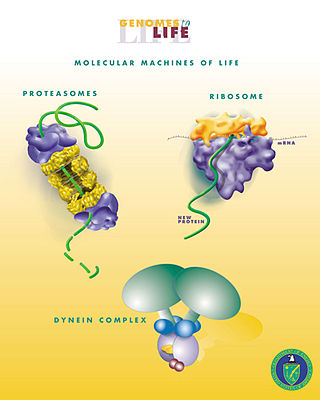
Biological engineering or bioengineering is the application of principles of biology and the tools of engineering to create usable, tangible, economically viable products. Biological engineering employs knowledge and expertise from a number of pure and applied sciences, such as mass and heat transfer, kinetics, biocatalysts, biomechanics, bioinformatics, separation and purification processes, bioreactor design, surface science, fluid mechanics, thermodynamics, and polymer science. It is used in the design of medical devices, diagnostic equipment, biocompatible materials, renewable energy, ecological engineering, agricultural engineering, process engineering and catalysis, and other areas that improve the living standards of societies.
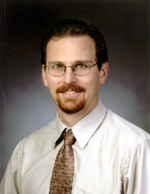
Kevin P. Granata was an American professor in multiple departments including the Departments of Engineering, Science and Mechanics and Mechanical Engineering at Virginia Polytechnic Institute and State University, in Blacksburg, Virginia. Granata held an additional academic appointment as a professor in the Virginia Tech-Wake Forest School of Biomedical Engineering and was an adjunct professor at the University of Virginia in the Department of Orthopedic Surgery. During the Virginia Tech shooting, he shepherded students into his office in order to safeguard them. He was then killed by Seung-Hui Cho after he went to investigate and intervene.
Biomechanical engineering, also considered a subfield of mechanical engineering and biomedical engineering, combines principles of physics, biology, and engineering. Topics of interest in this field include biomechanics, computational mechanics, continuum mechanics, bioinstrumentation, design of implants and prostheses, etc. This is a highly multidisciplinary field, and engineers with such a background may enter related niche careers, e.g., as an ergonomics consultant, rehabilitation engineer, biomechanics researcher, and biomedical device engineer.
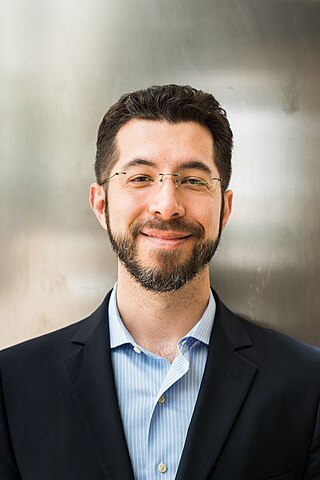
Edward S. Boyden is an American neuroscientist and entrepreneur at MIT. He is the Y. Eva Tan Professor in Neurotechnology, and a full member of the McGovern Institute for Brain Research. He is recognized for his work on optogenetics and expansion microscopy. Boyden joined the MIT faculty in 2007, and continues to develop new optogenetic tools as well as other technologies for the manipulation and analysis of brain structure and activity. He received the 2015 Breakthrough Prize in Life Sciences.
Duane Frederick Bruley is an American researcher, entrepreneur, and academician.

Karl Alexander Deisseroth is an American scientist. He is the D.H. Chen Foundation Professor of Bioengineering and of psychiatry and behavioral sciences at Stanford University.

Feng Zhang is a Chinese–American biochemist. Zhang currently holds the James and Patricia Poitras Professorship in Neuroscience at the McGovern Institute for Brain Research and in the departments of Brain and Cognitive Sciences and Biological Engineering at the Massachusetts Institute of Technology. He also has appointments with the Broad Institute of MIT and Harvard. He is most well known for his central role in the development of optogenetics and CRISPR technologies.
Marjolein Christine Hermance van der Meulen is an American engineer who currently serves as James M. and Marsha McCormick Director of Biomedical Engineering and Swanson Professor of Biomedical Engineering at Cornell University and is a Senior Scientist in the Research Division of the Hospital for Special Surgery.
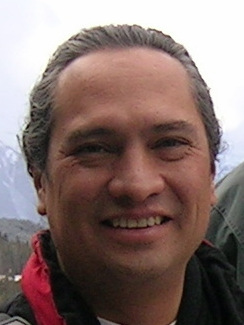
Francisco Javier Valero-Cuevas is an engineer of Mexican origin, and a Professor of Biomedical Engineering, Biokinesiology and Physical Therapy, Aerospace and Mechanical Engineering, Computer Science, and Electrical Engineering at the University of Southern California. He is known for his work on how the human hand works, and its clinical applications. He is notable for several inventions, including devices for measuring hand function and leg function, and the construction of archways in civil engineering. Among his scholarly contributions is a textbook on the mathematical foundations underlying the study of motor control and biomechanics. He is an Elected Fellow of the American Institute for Medical and Biological Engineering (2014), an Elected Senior Member of the Institute of Electrical and Electronics Engineers, and a Thomas J. Watson Fellow.
Alison Lesley Marsden is an American pediatric cardiologist and bioengineer. She is the Douglass M. and Nola Leishman Professor of cardiovascular disease in the departments of Pediatrics (Cardiology), Bioengineering, and, by courtesy, Mechanical Engineering at Stanford University. She is the daughter of Canadian-American mathematician Jerrold E. Marsden.
Beth Ann Winkelstein is the Deputy Provost and the Eduardo D. Glandt President’s Distinguished Professor at the University of Pennsylvania. Winkelstein has established an active research program that is recognized for elucidating the mechanisms of subfailure cervical spine injuries and the cellular events surrounding the etiology of chronic pain. She is further recognized for longstanding contributions to the discipline of biomechanics and for mentoring many students that have followed into research active careers. Her research focuses on orthopaedic and musculoskeletal disorders, including developing innovative new pharmacological treatments and biomedical devices; the mechanisms of bodily injury, especially injuries from sports, automobile accidents, and/or degenerative diseases; and new treatments for spine and other joint injuries.
Lucas H. Timmins is an American biomedical engineer and currently an associate professor at Texas A&M University. He is active in the fields of computational and experimental biomechanics and the application of these research domains to address prevalent challenges in cardiovascular medicine.
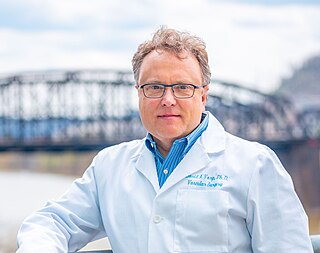
David A. Vorp is an American bioengineer, researcher, entrepreneur, and academic administrator noted for his contributions to aortic aneurysm biomechanics and pathobiology, and tissue engineered vascular grafts. He currently holds the titles of Associate Dean for Research at the University of Pittsburgh Swanson School of Engineering and the John A. Swanson Professor of Bioengineering, with secondary appointments in the departments of Cardiothoracic Surgery, Surgery, Chemical & Petroleum Engineering, and the Clinical & Translational Sciences Institute at the University of Pittsburgh. He also serves as the co-director of the Center for Medical Innovation., the acting director of the university's GRID Institute, and the director of the Vascular Bioengineering Laboratory.
Beth L. Pruitt is an American engineer. Upon completing her master's degree in manufacturing systems engineering from Stanford University, Pruitt served as an officer in the United States Navy. She is a full professor of mechanical engineering, biological engineering, and biomolecular science & engineering at the University of California, Santa Barbara. She is a fellow of both ASME and AIMBE.
Michelle Lynn Oyen is an American materials scientist who is a Professor of Biomedical Engineering at Washington University in St. Louis. Her research considers nano indentation and biomimetic materials. Michelle Oyen has focused on maternal health, particularly through the lens of biomechanics. Her research aims to better understand and improve pregnancy outcomes by studying the mechanical properties of tissues involved in pregnancy and childbirth.
Alisa Morss Clyne is an American mechanobiologist. She is a Full Professor and Associate Chair of Diversity, Equity, and Inclusion in the Fischell Department of Bioengineering at the University of Maryland, College Park. Clyne is an expert in endothelial cell biology, biomechanics, and metabolomics.
Jill Startzell Higginson is an American biomechanical engineer and an expert on gait. Her research involves the observation of gait, the contributions of different muscles to gait, and the diagnosis of muscular problems involving gait. She is George W. Laird Professor of Mechanical Engineering at the University of Delaware, and the head of the university's Neuromuscular Biomechanics Lab.









